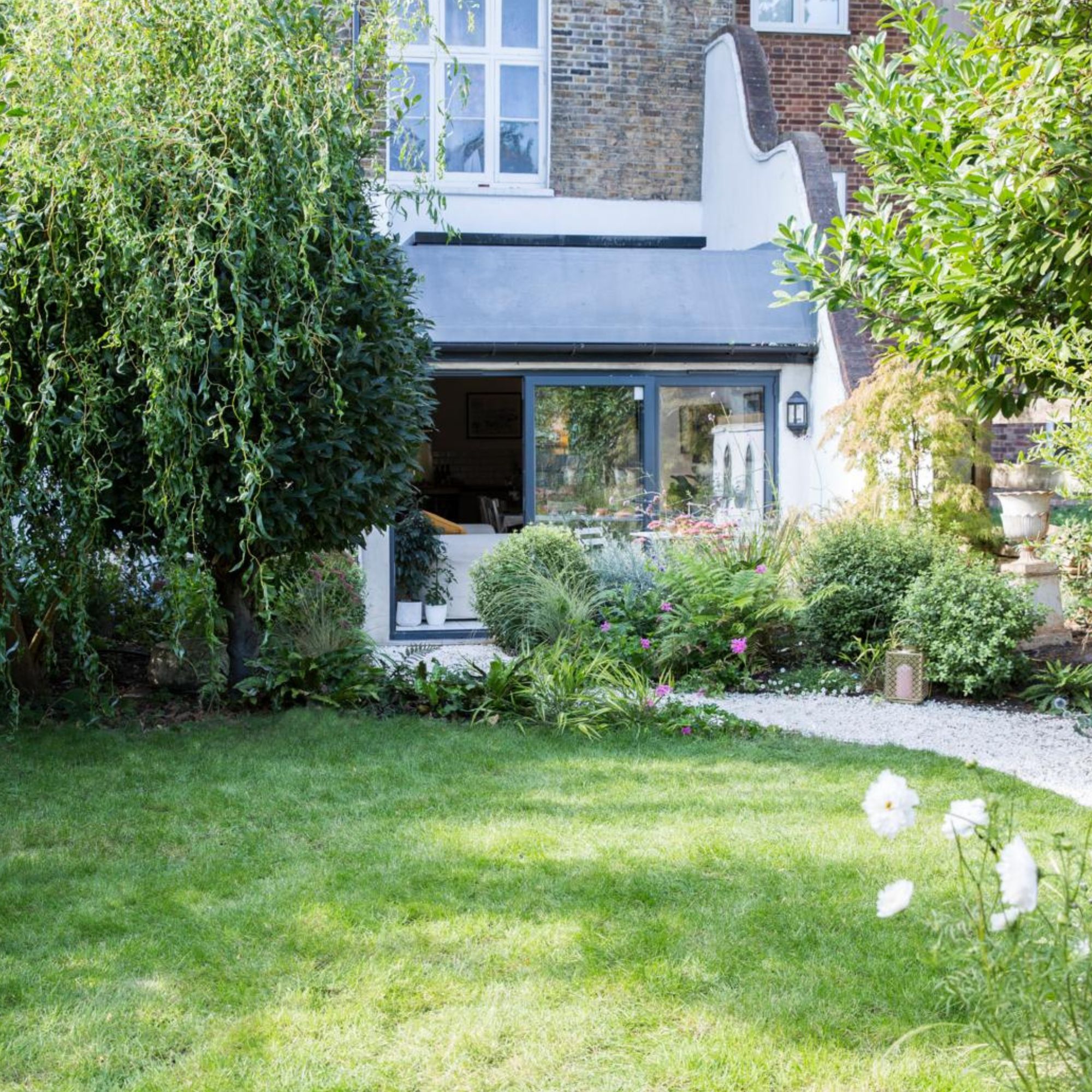
If you're wondering how to care for a lawn in shade, you've come to the right place: we've pooled together all of our know-how (and consulted some gardening experts) to bring you the lawn care tips you need to get your garden looking its greenest.
That's right, everyone: even the loftiest lawn ideas aren't out of reach for those with shady or north-facing gardens, so long as you're prepared to a) think outside the box a little and b) show your grassy verge some serious TLC.
'Lawn growing in a shady area in a garden – such as under a tree, by a wall or in a north facing garden – can often be patchy and hard to grow. There might be bare ground, moss and very little growth, but there are ways to keep the area green with shade tolerant grass seed or a mossy lawn,' promises Morris Hankinson, director of Hopes Grove Nurseries.
With that in mind, then, here's how to care for a lawn in shade like a true gardening pro.
How to care for a lawn in shade
As mentioned already, it's important to think outside the box when planning out a lawn for a shaded area – which often means (deep breath, everyone!) turning your back on regular grass seed.
'The best way that you can care for a lawn in shade, is to ensure that you have chosen a grass seed or wildflower seed that is fit for purpose and designed with shade in mind,' explains Chris McIlroy from The Grass People.
'Regular grass seed does not grow well in shaded areas. So, if you have trees, buildings or fences in your garden that cast shadows throughout the day, using the traditional stuff could make your lawn look worse for wear.'
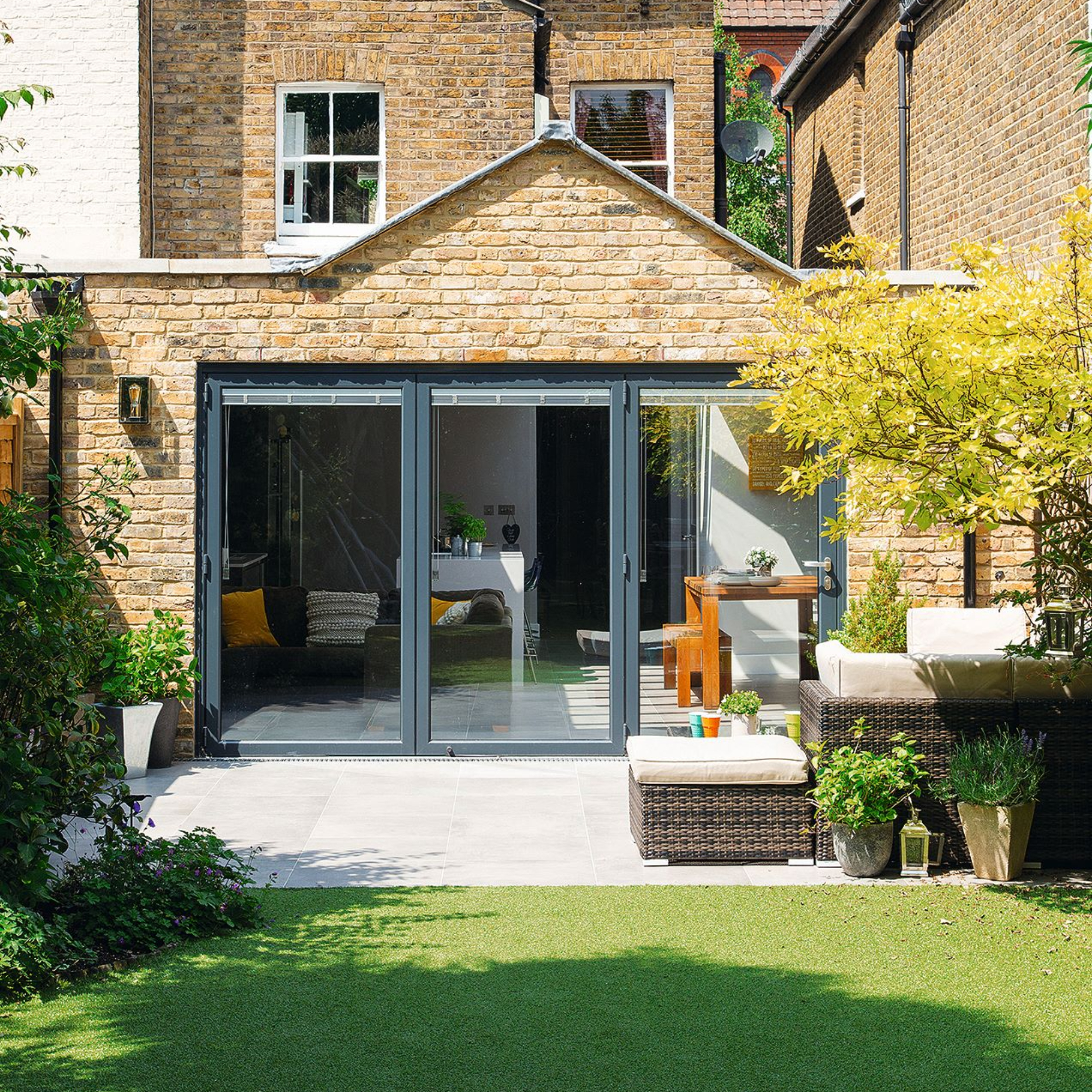
'If you don’t know what kind of grass seed has been used, it is a good idea to clear the ground and reseed using a shade tolerant grass mix,' agrees Morris.
'These will have a mix of seed that is more likely to grow in shade such as fescue grasses. If the area is damp as well as shady look for a seed mix with agrostis seed – or even a low maintenance lawn alternative to grass entirely.'
The best lawn seed for a shaded garden
'While there are many, many choices on the market for regular grass seed, you need to be looking for one that is suited to shade, and there are some grass varieties within those mixes that you should look out for in particular,' explains Chris.
This grass seed is ideal if you're in the market for a lawn that thrives in dry shady conditions.
Containing grass super species Poa Supina, this shade-loving lawn mix is well worth investing in.
This shade-tolerant lawn seed contains Watersmart grass technology which grows strong roots for optimum absorption of water and nutrients.
If you want a little extra know-how when browsing the back of the box of the shade-tolerant lawn seed in stock at your local garden centres, be sure they include at lease one of the most shade-tolerant grass varieties.
These are, in Chris's opinion, as follows:
- Strong Creeping Red Fescue: 'This is a grass seed type grows quickly and doesn’t require much light to flourish,' he explains. 'Its creeping nature also means it covers a lot of ground and recovers well from wear and tear. This makes it a great choice for areas of your lawn that struggle to grow due to low-light conditions.'
- Chewings Fescue: 'This hardy fine grass seed grows thick and provides resilience and the ability to grow in low-fertility soils,' promises Chris, noting that it suits shaded areas perfectly.
- Poa Supina: In some shade grass mixes you will also find a Poa Supina grass seed variant. 'Poa Supina is the ultimate solution for areas of your garden struggling to grow due to permanent shade,' says Chris. 'This super-species is exceptionally shade-tolerant and grows perfectly in low to no-light conditions, and it's ideal for areas of your garden constantly in the shade.'
When to sow a shaded seed grass mix
Of course, there's more to creating a vibrant lawn in shade than picking the right seed mix: you need to know when to overseed a lawn that skews on the darker side, too.

'Timing is crucial when sowing grass seed in shaded areas,' says Chris.
'The best seasons for sowing are spring, summer, and autumn when temperatures consistently reach at least 15° Celsius. This is above the temperature required for sowing grass seed in normal conditions and that is because the seeds rely heavily on heat due to the lack of light in those areas.'
Morris adds your seed will need at least some light to grow, so ;seeding the area under a tree when there are no leaves is better so the grass gets a chance to grow with more light'.
Tips on making sure your shaded lawn grows
Once you've sown your grass seed, all that's left to do is suss our how to care for a lawn in shade – which is where these genius tips come into play...
1. Water it well
It's every bit as important to improve lawn drainage as it is to water your grass well, especially if yours is growing in a shady garden.
'Just as you would for any newly planted grass seed, keep your shade-tolerant grass seed moist by watering it once or twice a day until it reaches the ideal height for its first mow,' says Chris.
'Then, you can revert back to watering your new grass in the shaded areas as often as the rest of your lawn.'
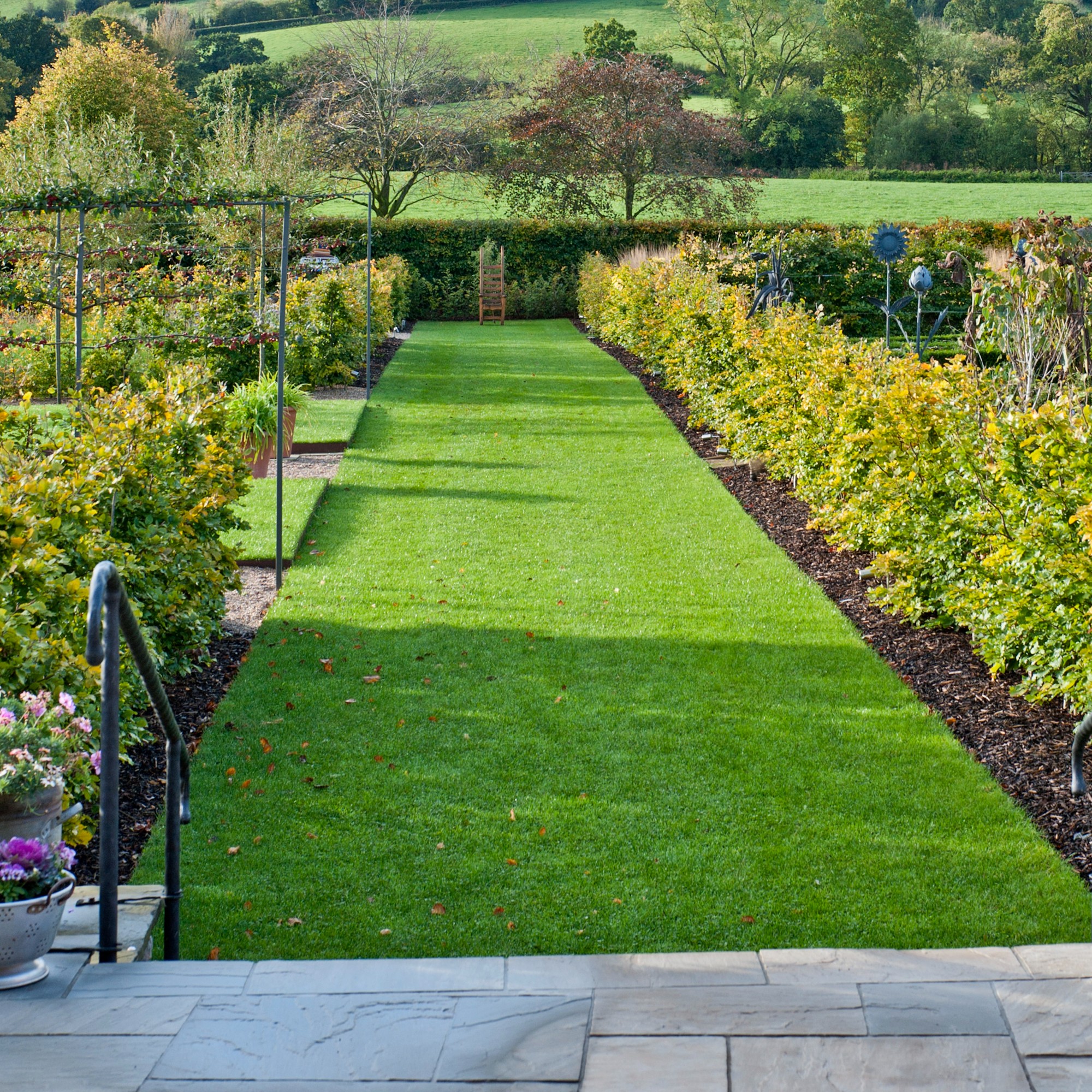
'If you’re putting the seed down in a moist area of your garden that’s damp or prone to moss, then make sure the soil is aerated and has substantial irrigation so it doesn’t get waterlogged or overwatered,' he adds.
Remember: the shaded areas of your lawn often won’t get much moisture from the rain, so for the first while, it’s best to water it once a week, even if it has been raining as usual.
'If large trees and hedges cause shade, we advise you to be more generous when watering shaded grass since the grass will compete with the other plants for water and nutrients,' says Chris.
2. Feed your lawn
If you want your grass looking its tip-top best, remember that 'feeding your lawn with fertiliser will also give it a massive growth boost, improve its health and build resistance against common lawn diseases,' says Chris.
Something like Make It Grow from The Grass People or Miracle-Gro EverGreen Autumn Lawn Care, Lawn Food & Moss Control from Amazon would work well.
Why? Well, because the Royal Horticultural Society (RHS) says that 'autumn lawn feeds are rich in potassium (K), which is particularly beneficial to grass in shade', of course!
3. Change your mowing schedule
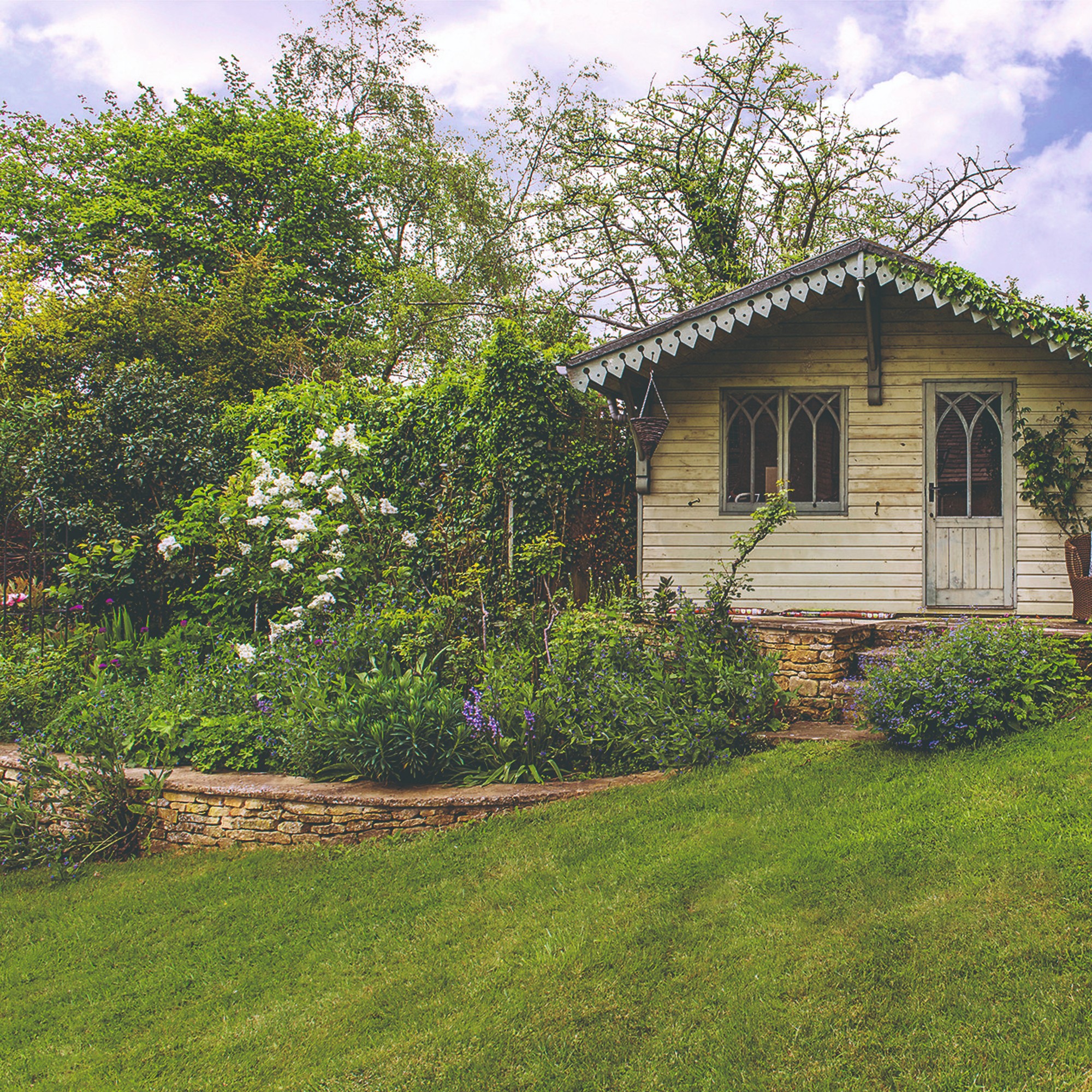
'Lawns in the shade need a little extra care to keep them thriving, except when it comes to mowing – in fact, you may find that the shady patch needs cutting less often,' says Peter Chaloner, managing director of Cobra.
'If that’s the case, avoid the temptation to cut when you’re doing the rest of the lawn as this could scalp it. Instead, cut that section every other mow, or as often as is required.'
Peter adds that 'you can also adjust the height of the blades, raising them so only the tips of the grass are cut'.
4. Let more light in
Bad news for anyone who's desperate to know how to get rid of moss in a lawn: shady lawns are a haven for moss growth.
'One of the most effective ways of reducing this is to do all you can to let more light in,' says Peter.
'There are chemical treatments available, but simply considering if there’s anything that can be done to reduce the shade – for example, thinning out hedges or cutting back any overhanging branches – can work wonders.'
5. Scarify and aerate

It's time to learn how to aerate your lawn, as this is another vital step in keeping your shady lawn looking its utmost best.
'it’s vital to uphold a good lawncare regime through the year to keep the grass as healthy as possible with scarifying and aerating as needed to allow nutrients to the roots of the grass, and to stop any thatch and dead grass from building up,' says Peter.
'This will also aid drainage which can be particularly probably in shady patches that tend to retain moisture.'
FAQs
How do you maintain grass in shade?
If you're trying to figure out how to care for a lawn in shade, there are just a few things to remember: choose the right grass seed, sow it at the best time of year, water and feed it well, and adjust your mower accordingly.
'Let your grass in shaded areas grow a little taller than the rest of your garden before cutting,' says Chris.
'This will give the grass more time to thrive and capture more sunlight as its blades grow and open, and it encourages deeper root growth for a stronger lawn overall!'
Can you lay turf in shaded areas?
As a rule, turf grass plants do not tend to thrive in shady gardens – although do your research, as some, like fescues, will have a greater tolerance than others (especially if you're prepared to give them some extra help).
What is the best grass seed for full shade?
As mentioned already, anyone with a shady lawn should look grass seed mixes that contain the following varieties: creeping red fescue, chewings fescue, and Poa Supina.
If this doesn't work for you, however, there is another solution. 'It is unlikely a lush green lawn will ever grow in deep shade so it is worth looking at alternatives such as embracing a moss lawn, planting shade-loving perennials or transforming the area into seating where you can relax in the shade during the summer,' says Morris.
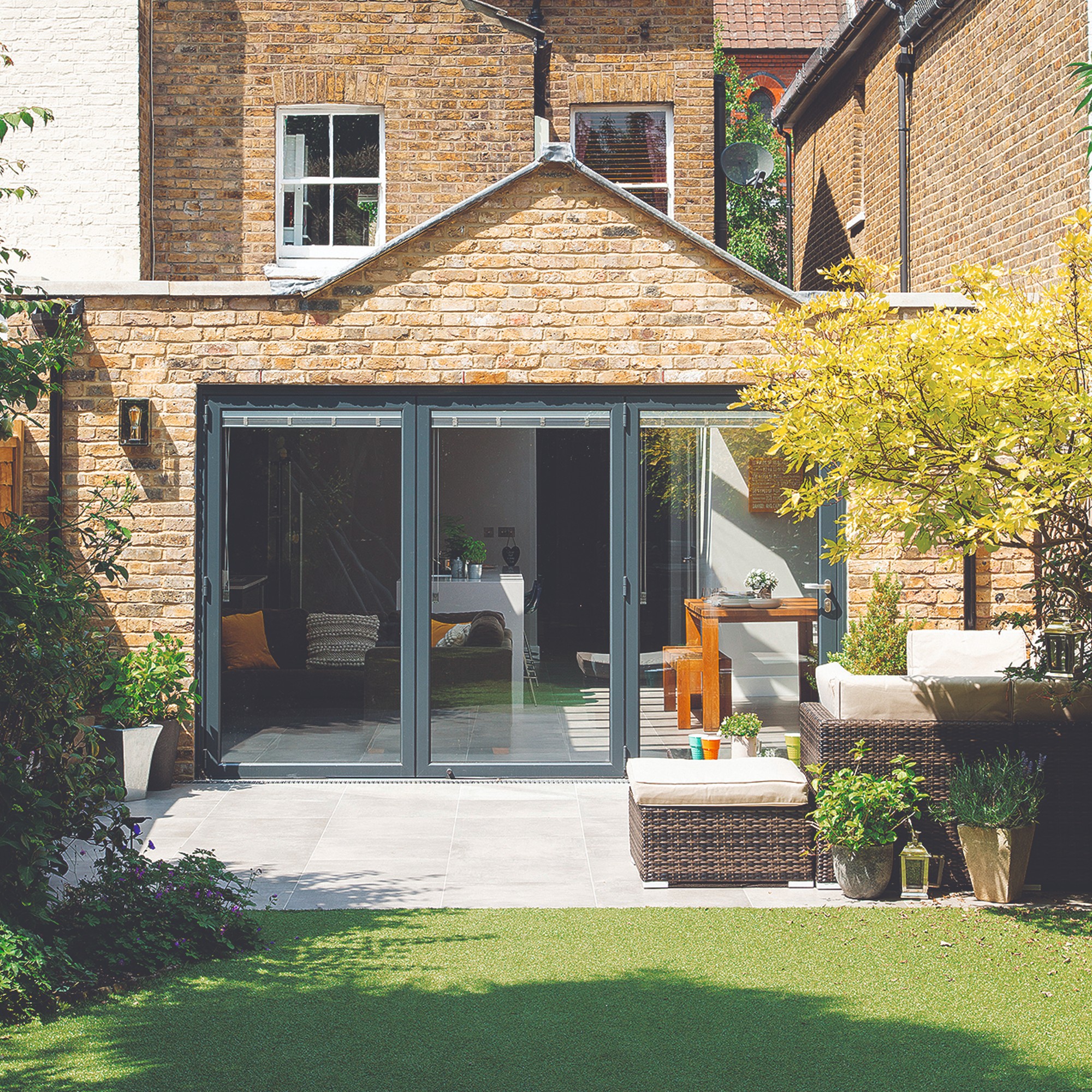
Now that you know how to care for a lawn in shade, you can go forth and ensure your garden becomes the envy of every green-eyed neighbour going. We promise that it will be well worth the effort!







